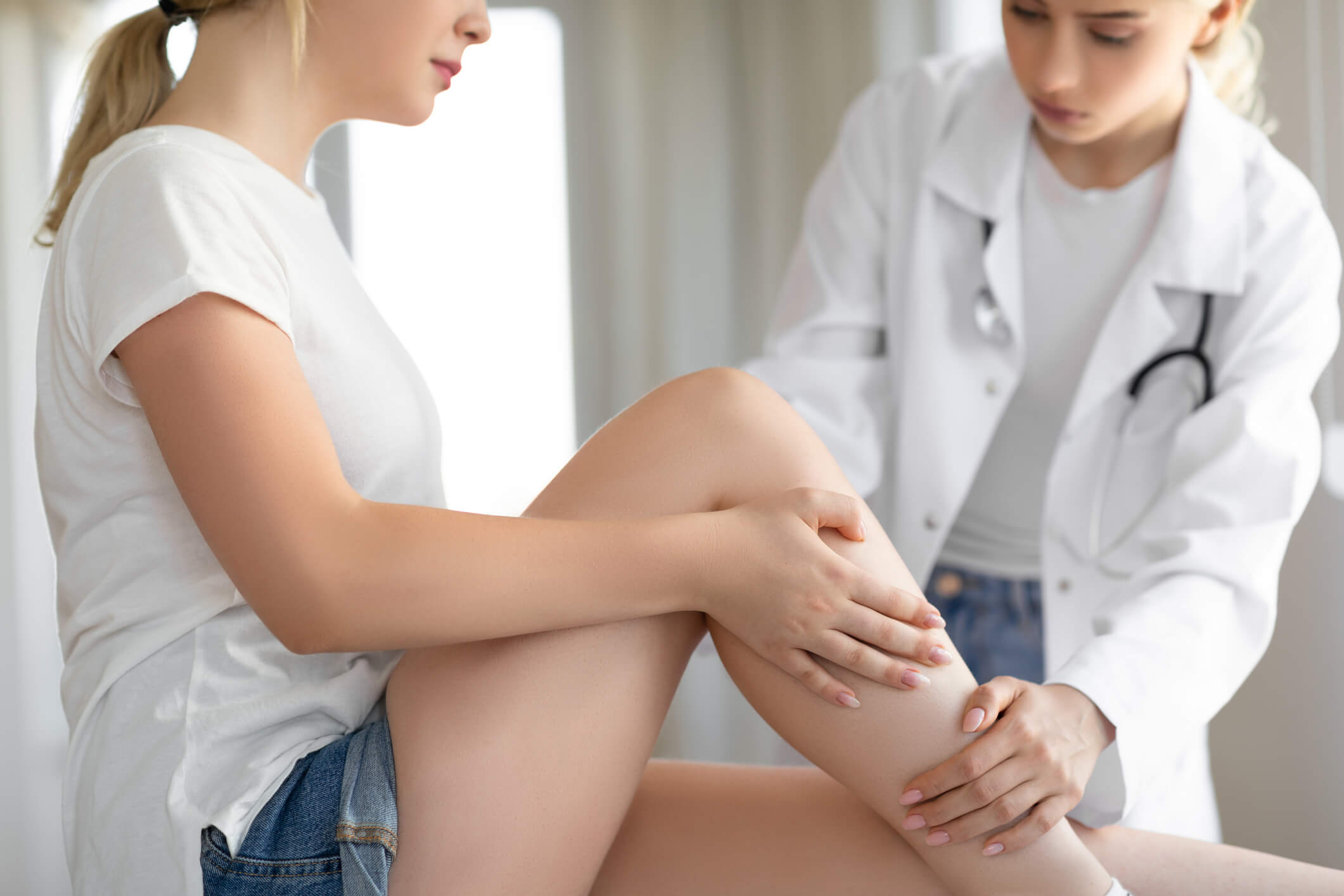
When most people think of varicose veins, the picture that comes to mind is typically older women with bulging blue veins running up their shins and calves. While this may not be a misnomer, it certainly does not paint a complete picture of the different populations of people prone to varicose veins.
Vascular veins, commonly called varicose veins, can be hereditary, health-related, or a by-product of an unhealthy lifestyle. As the body ages, blood vessels begin slowly breaking down. As they relax slightly, the tiny valves within veins can no longer close properly, and blood is not efficiently returned to the heart. Instead, it slips downward to the lower extremities, overfilling veins and pressing against the walls of these veins, causing them to stretch even more. This feedback loop causes excessive bulging in the veins (varicose veins) and gravity pulls blood down to the ankles, which is perceived as swollen ankles. But why does this process happen more frequently in women?
Statistically, women have a greater chance of varicose veins than men, with estimates ranging from 50 percent to 55 percent of American women suffering from varicose veins or a similar venous disorder at some time during their lives as opposed to 45 percent of men, according to a study by the American Vein and Lymphatic Society (AVLS). AVLS also reports that women are four times more likely to develop varicose veins than men with a staggering 22,000,000 women between the ages of 40 and 80 in the United States alone suffering from varicose veins. What is it, though, that causes women to be more likely to have varicose veins than men? Pregnancy and its hormonal changes and weight gain, menopause, and the use of hormones for birth control or to counteract menopause are three predominant factors. What do all of these have in common? Hormones, and, in particular, estrogen.
Studies have shown that estrogen may damage the tiny valves inside veins. Without the valves maintaining blood flow, the blood will seep down as far as gravity will allow, pooling in the lower extremities. Estrogen is the primary hormone in birth control pills as well as hormone therapy for menopausal and post-menopausal women. Increasing the amount of estrogen in the body may negatively impact veins twice: it could cause issues with the walls of veins and reduce the work capacity for the valves inside the veins. When the veins and their valves are compromised, the result easily becomes varicose veins.
While aging affects varicose veins in both men and women, a significantly higher percentage of women will experience varicose veins because their bodies, which acclimate to a specific level of estrogen, are suddenly thrust into a life with much lower estrogen levels. Pregnancy is also a low-estrogen time of life since estrogen controls menstruation, which the body finds unnecessary during pregnancy. Pregnant women also experience higher blood pressure and a 25 percent increase in the amount of blood in their bodies to feed their developing fetus. These factors increase the appearance of varicose veins beginning as early as the first few weeks of pregnancy. Pregnancy-induced varicose veins tend to disappear a few months after giving birth but have a prevalence of recurrence with each succeeding pregnancy. Studies have shown that women with high levels of progesterone (another important reproductive hormone), which is common during pregnancy, are more prone to varicose and spider veins, regardless of age.
Progesterone relaxes the walls of both veins and arteries. This relaxation impedes proper blood flow, and the constant pressure on the sides of the blood vessels stretches the vessels out of shape, which is recognized as varicose veins. Women with spider veins are often at higher risk for experiencing problems with the great saphenous vein that runs along the inside of either thigh and around the shin and calf because of a higher amount of progesterone in their bodies.
Women are more prone to seek treatment for varicose veins when they first develop, which means their treatment may be simpler than a man’s treatment since men tend to wait until varicose veins cause discomfort before they visit a physician. Other than this, treatment is the same regardless of gender.
Surprisingly, the percentage of men who have varicose veins is not vastly smaller than women. According to a Stanford Hospital and Clinics study, approximately 45 percent of men develop varicose veins. Of that 45 percent, though, only 10 to 15 percent will have visible varicose veins compared to 25 percent of the cases for women. Another factor is appearance. Women are more likely to seek treatment when veins first become noticeable while men tend to wait until varicose veins cause pain and discomfort. Men are also more comfortable with the appearance of smaller varicose veins since the terminal hair on men’s legs hides these “imperfections.”
Men are typically more active than women and will experience leg injuries more frequently. This is another factor that may lead to varicose veins, along with straining the abdominal region from exertions such as lifting weights. In older men, inactivity and constipation — hemorrhoids are localized varicose veins — are other risk factors.
Central Florida Vein & Vascular Center in Orlando has plenty of information on varicose vein treatment for men and women that you can read on our website. Contact us at 407-293-5944 or 352-658-5547 to schedule a consultation so you can start feeling better. We have offices conveniently located in Ocoee, Kissimmee, The Villages, and Oviedo.
Varicose Veins – Causes & Prevention
Risk Factors, Complications, Warning Signs
Varicose Vein Treatment